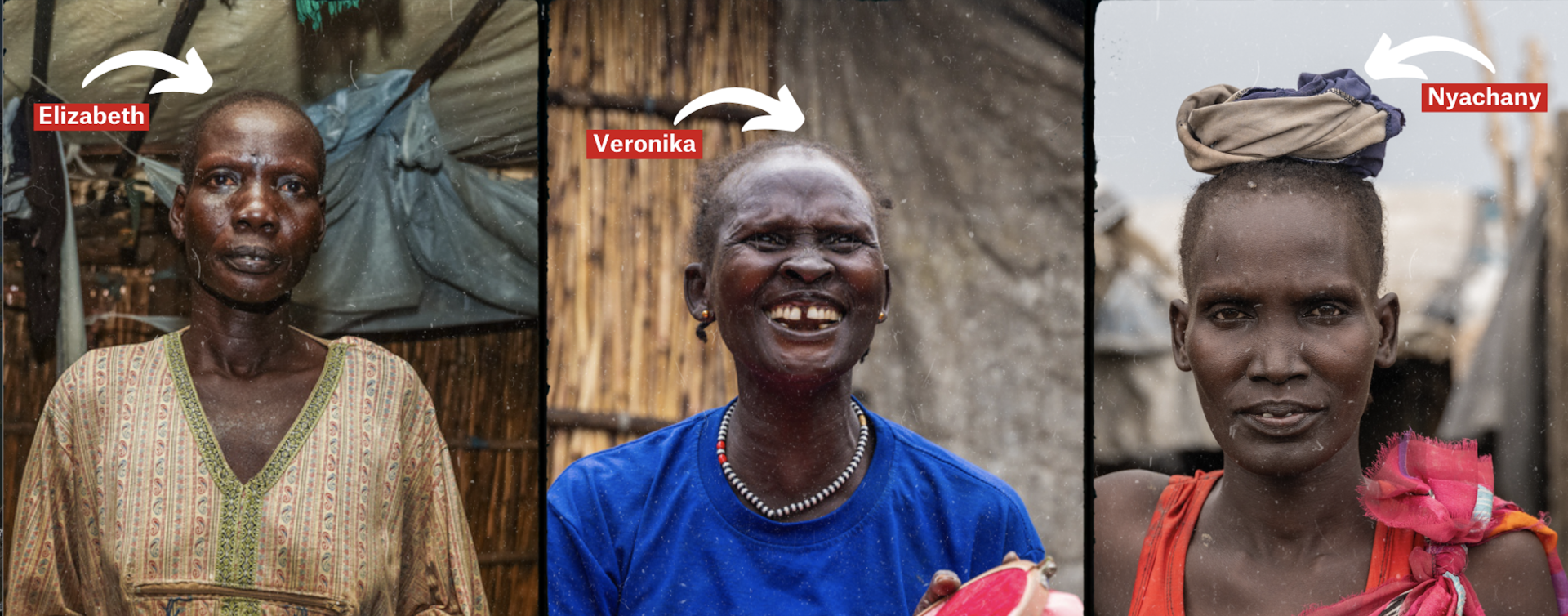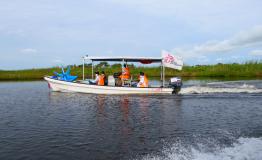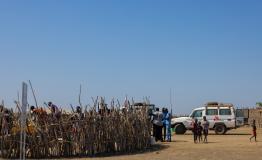- South Sudan is one of the five most vulnerable countries to climate change. From 2019 to 2022, torrential rains and rising water levels in the Lake Victoria watershed created a vast swampy expanse of floodwaters. In 2022, flooding harmed around one million people in the country
No choice but to flee
Though the White Nile and surrounding river networks provide important natural water sources, during the rainy season they also pose a threat — floodwaters destroy houses, harvest, livestock and compromise clean water access, sanitation and hygiene facilities. In 2023, an estimated 5.4 million people lived in flood-affected areas, forcing hundreds of thousands to flee.

Veronika, a woman in her late 40s is one of them. “It was very difficult to leave because I was alone with my 5 children and my house was completely flooded. I had to use jerricans and plastic sheets to help my children moving into the floods. I thought we would not make it alive,” she says.
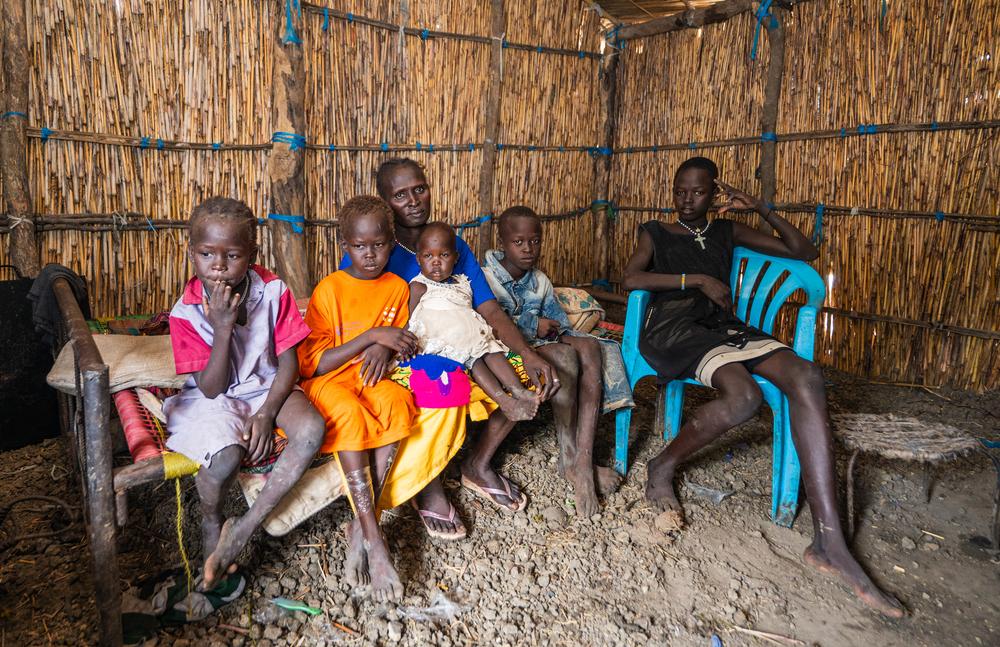
A few kilometres from Veronika’s hometown, Nyachany and her six children spent two years at the mercy of rising floodwaters in Tuoyluak, a village near the White Nile, a river that drains Victoria Lake. She resisted fleeing, but this year she had to. “My property was completely flooded. We made makeshift beds with sticks and raised it so high to keep the children safe,” says the mother of six, cradling her eight-month-old daughter Wangnen in her arms. Soon, as the waters continued to rise, they ran out of sticks that were high enough. Since then, the town's school and clinic have slowly disappeared under the flood waters.
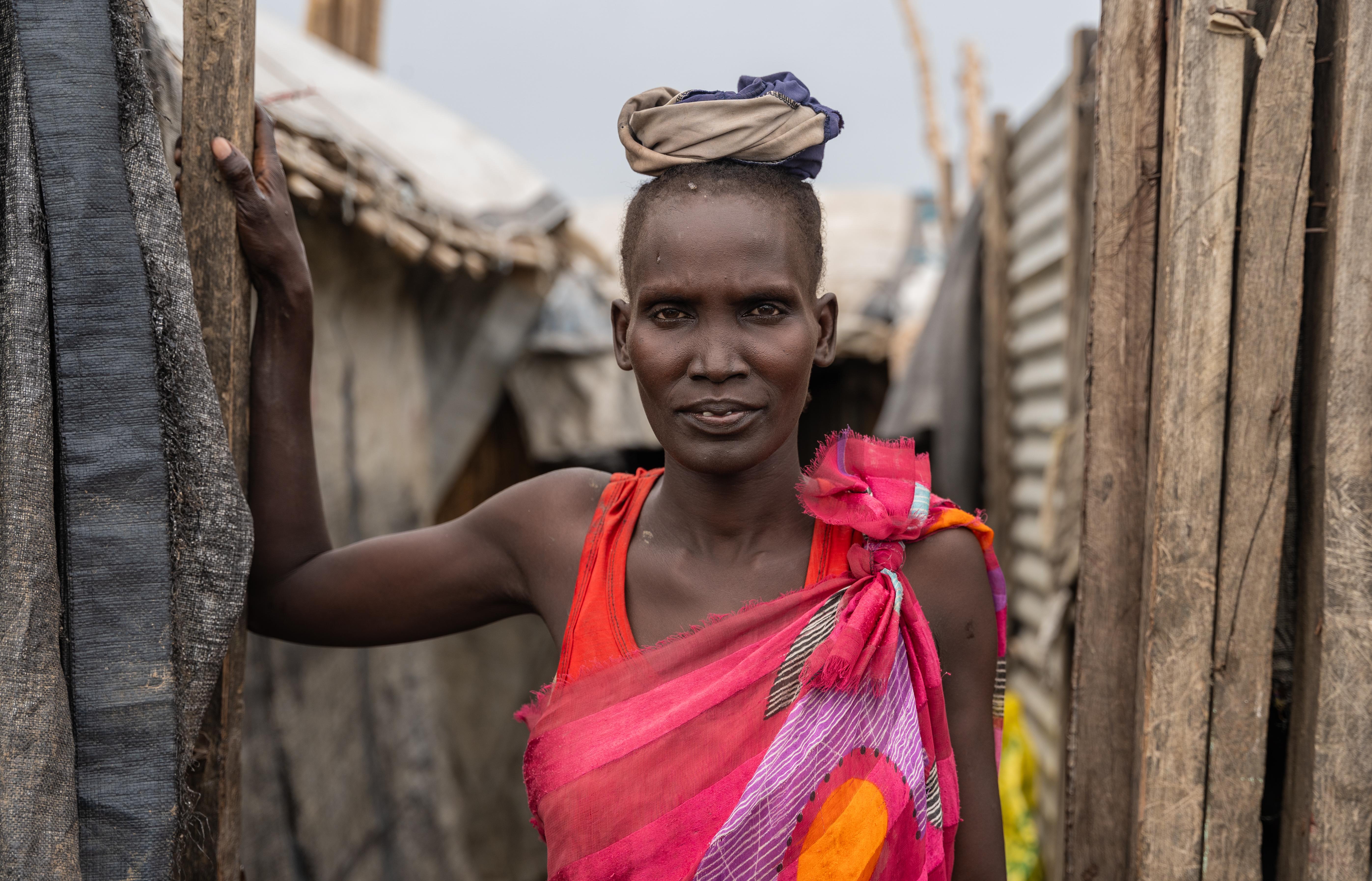
Life on a drowning island
After a four-day journey through the floods, Veronika, Nyachany, and their children found safety in the Bentiu internally displaced people’s camp in Unity State, Rubkona County. Surrounded by creeping floodwaters, this overcrowded camp hosts more than 100,000 people, trapped on a small island secured by dikes.
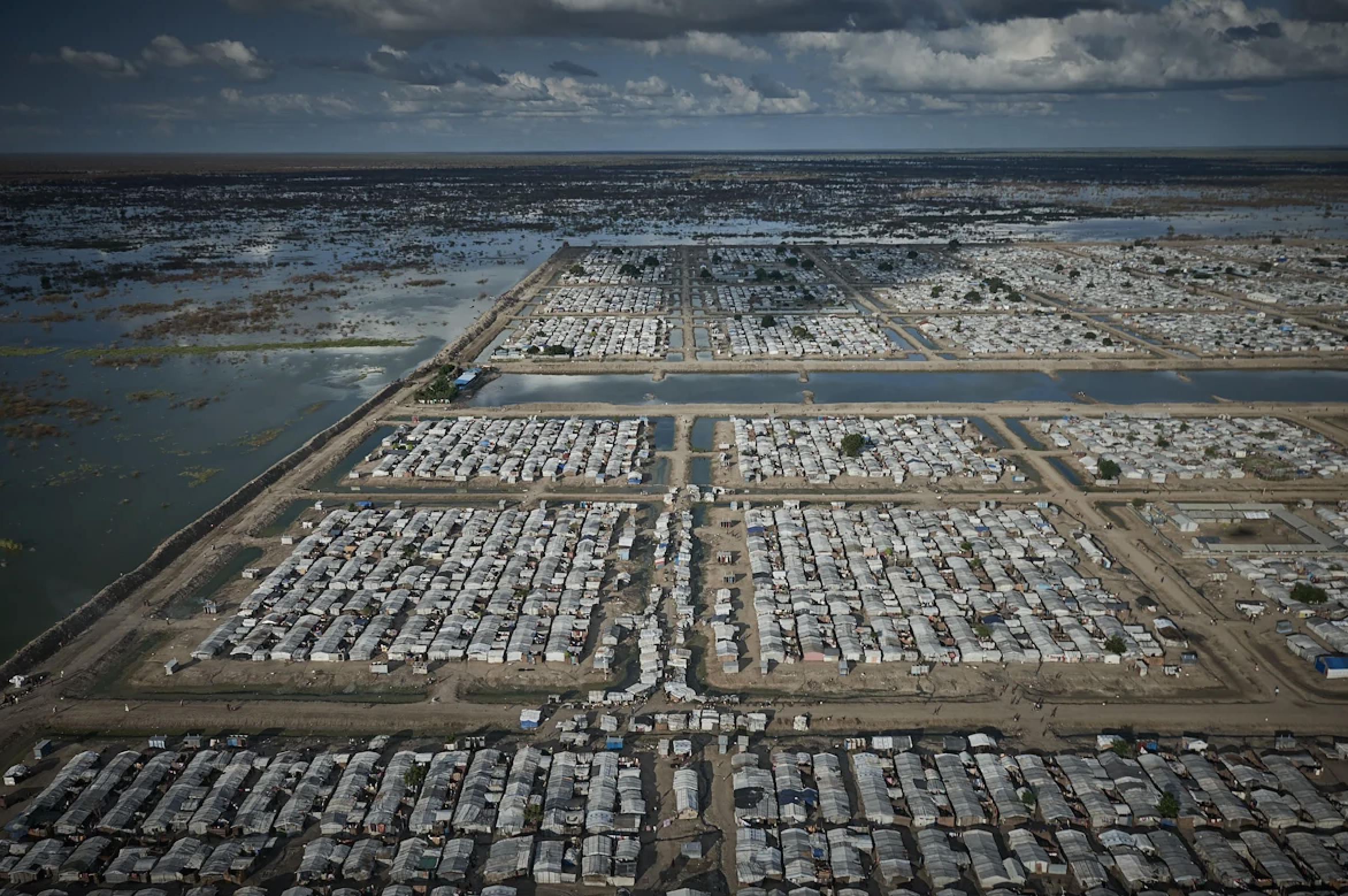
Many of the people living in the Bentiu camp have experienced two tragedies: conflict and flooding. They arrived between 2013 and 2018 during the civil war and have had no place to return to since the war ended, as their hometowns were completely flooded.
Elizabeth, who lives a few shelters away from Nyachany and Veronika’s families, arrived in the Bentiu camp in 2014 with her seven children. “During the war, some men broke into my property to steal my cattle. With no livelihood and worried about my children, we had no choice but to flee,” she said as tears welled in her eyes. She recalls the muffled sounds of gunfire that echoed down the road as she ran with her children, bullets whirring around them. Many people fell along the way, including her husband who was killed while Elizabeth was shot in her leg on their way to the Bentiu camp, which was a Protection of Civilians camp at this time.
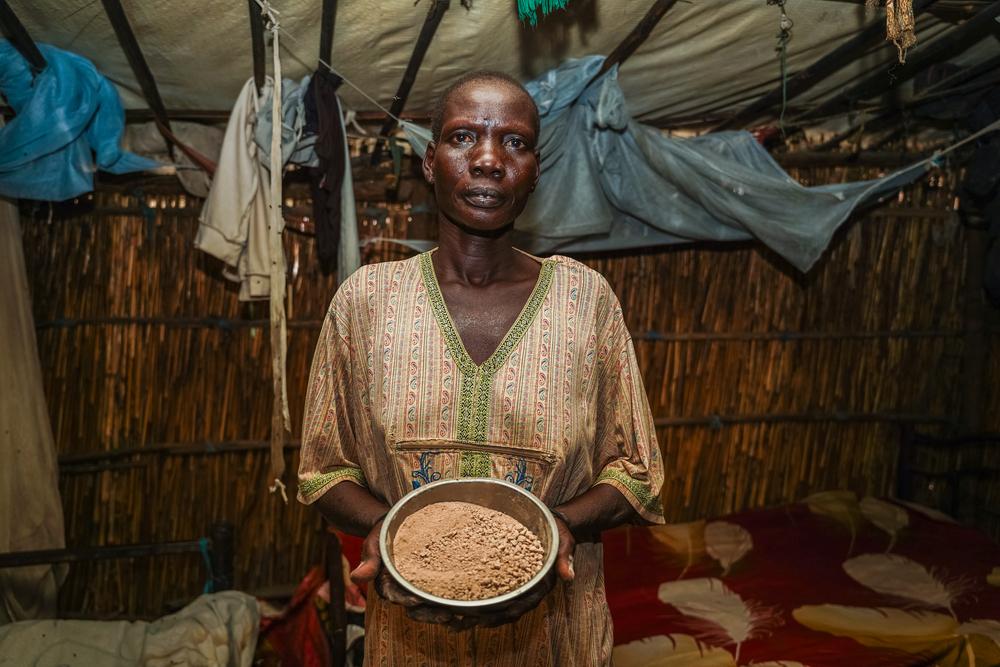
Elizabeth's life was forever changed that day; she would never be able to return to her hometown in Buow. “If there were no flooding, I could go back now that it’s safer and I could cultivate crops. Now I am desperate and I have no plan to leave the camp as my children are going to school; outside there is no school left because of the flooding,” says the 43-year-old cattle breeder.
Nothing left
Recurrent flooding has made rural areas more vulnerable by reducing agricultural productivity and raising the risk of food insecurity. Most of the people living in the Bentiu camp rely on humanitarian assistance to survive.
Nyachany, Veronika and Elizabeth each expressed their sadness at not being able to provide their children with enough food. “We eat once a day, only lunch but no breakfast or dinner. For seven people, we get 50kg of sorghum (a cereal grain), one litre of oil and a small amount of lentils from the World Food Program. I really depend on it. I don’t know if my children are malnourished or not but what I know is that their weight has reduced more and more,” Elizabeth says.
Flood-affected areas, such as Rubkona, are experiencing the most severe malnutrition levels since 2023, exacerbated by limited access to food and livelihoods. From September to November 2023, an estimated 15,000 people in Rubkona County were affected by famine.

Long-term impact
Floods that have destroyed all the trees around the camp, force Veronika to travel miles to collect firewood. At 6am, she takes a boat to a remote forest, and it's only when night falls that she returns to the shelter with some firewood that she sells to buy food. But Veronika won’t let her daughters do the same, she explains: “Women and girls are especially vulnerable to climate change, especially when they have to go for wood in the forest far from home because there is nothing nearby and they are assaulted.”
Women rely heavily on local natural resources for their livelihood, especially in rural areas where they are responsible for home water supply and food security of the household. Flooding can have a disproportionate impact on women, who often perform labor-intensive tasks like farming, fetching water and firewood, and caring for children.
Veronika, alone with her children, and with limited resources, cultivates a small plot of land in the camp, but she is once again affected by floodings. “In my previous life, I was cultivating pumpkins, maize, cucumber, okra and watermelon. In the camp there is not enough space to cultivate as we are surrounded by floods. Here we can just cultivate a small area of occra and beans, it’s not enough,” she says.

For now, Veronika, Nyachany, and Elizabeth are focusing on providing a brighter future for their children, but the three single mothers all confessed to having "lost hope".
For Veronika, Nyachany, and Elizabeth, as well as the millions who have fled due to war and climate shocks in South Sudan, the threat of climate inaction is real.
“The government and decision makers could help us, they should do it because we already have enough troubles with the internal conflicts, and climate change could be the tipping point, especially for women and children,” Veronika urges.
Unfortunately, the rains are expected to intensify from July to October 2024. Recent forecasts indicate an increased likelihood of above-normal rainfall and large volumes of water being released from Lake Victoria into the Nile River system due to heavy rains driven by El Niño in 2023/2024. This would probably cause peak flooding on a scale unprecedented in the last century, affecting up to 3.3 million people in South Sudan
